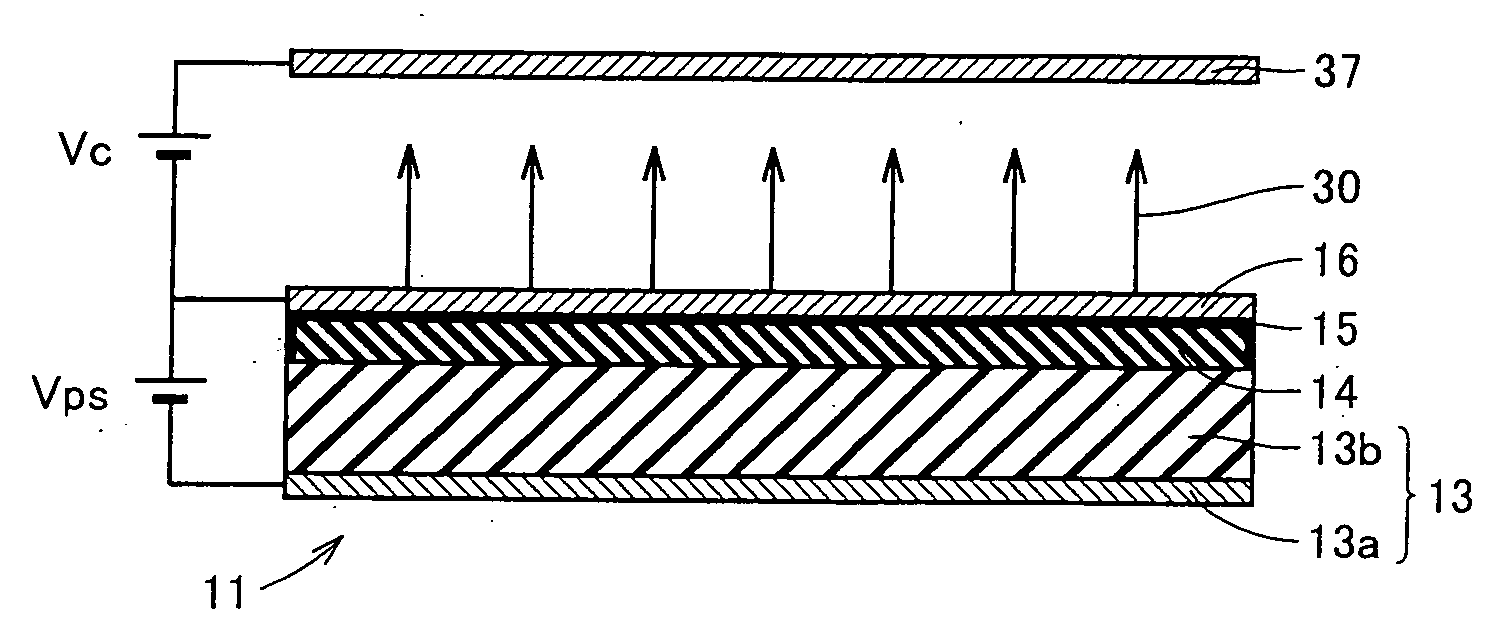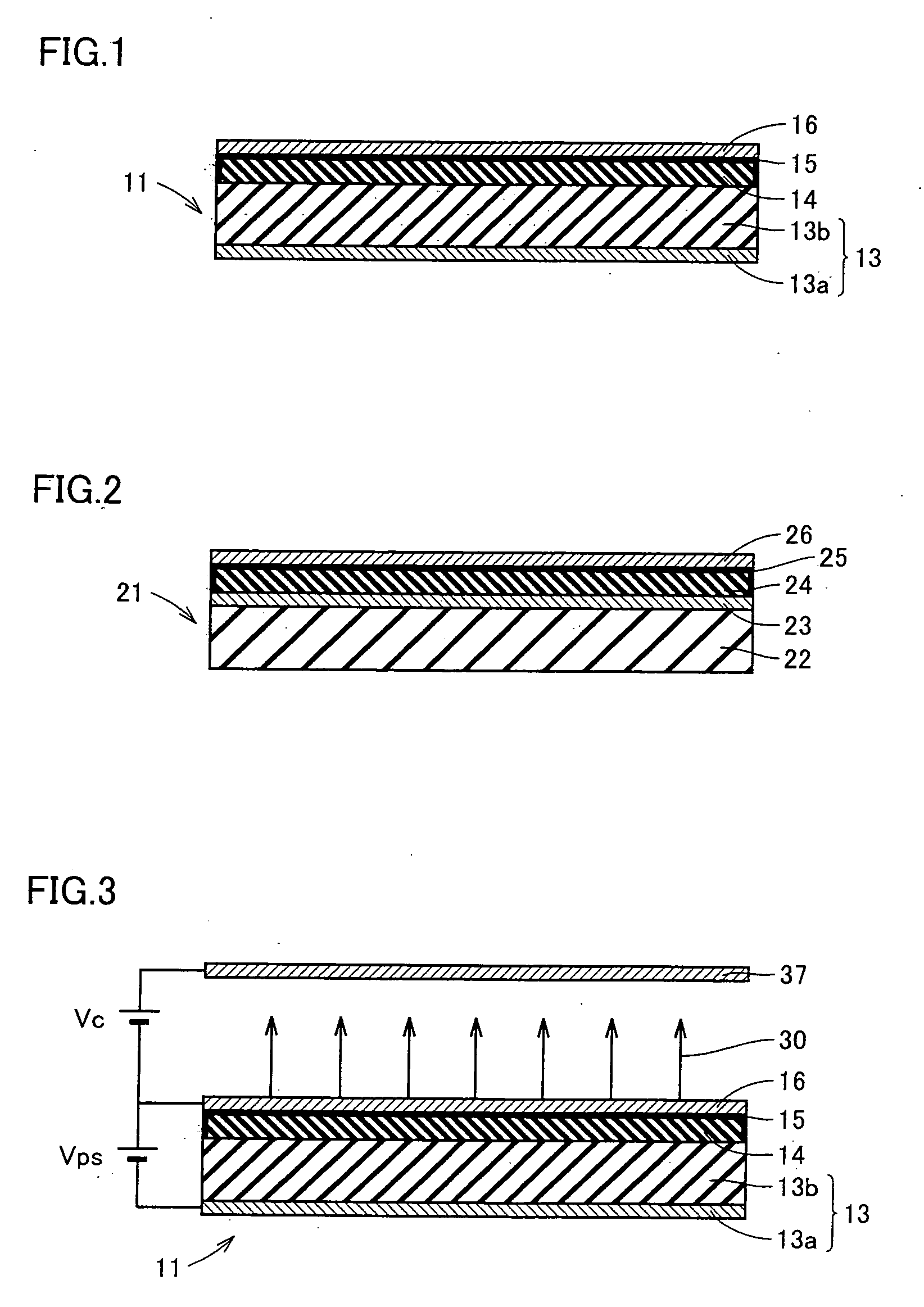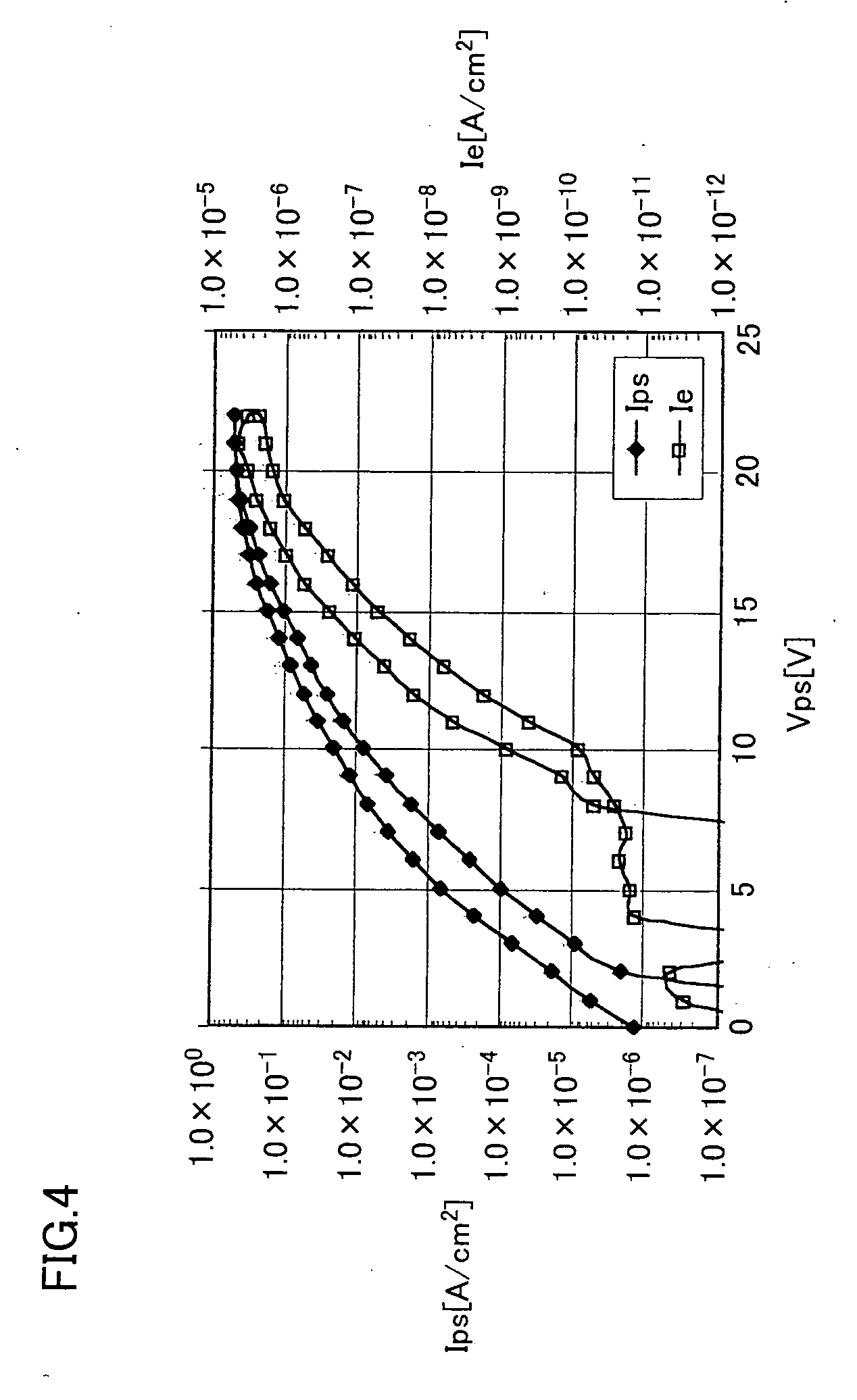Electron emitting element and image forming apparatus employing it
a technology of electron emitting element and image forming apparatus, which is applied in the direction of instruments, tubes with screens, corona discharge, etc., can solve the problems of sputtering and breakdown of elements, and achieve the effect of stable operation
- Summary
- Abstract
- Description
- Claims
- Application Information
AI Technical Summary
Benefits of technology
Problems solved by technology
Method used
Image
Examples
embodiment 1
[0041] With reference to FIG. 1, an electron emitting element 11 according to the present invention has a structure in which a porous polysilicon layer as a semiconductor layer 14 is formed on a semiconductor substrate 13b made of n-type silicon on the rear surface of which an ohmic electrode 13a is formed, an organic compound is caused to be adsorbed on a polysilicon surface of the porous polysilicon layer to form an organic compound adsorption layer 15, and an upper electrode 16 is formed on a surface thereof. Not only is organic compound adsorption layer 15 shown in FIG. 1 formed on a surface of the porous polysilicon layer, but an organic compound adsorption layer is formed on a polysilicon surface in the inside of the porous polysilicon layer, though not shown. Semiconductor substrate 13b made of n-type silicon has a high electric conductivity and has a function as a lower electrode 13 integrally in a piece with ohmic electrode 13a.
[0042] The porous polysilicon layer was prepa...
embodiment 2
[0053] Another electron emitting element according to the present invention (an inventive element in the example shown in FIG. 7) was fabricated in a similar way to that in Embodiment 1 with the exception that n-dodecanal (CH3(CH2)10CHO) was used when an organic compound is adsorbed on a polysilicon surface of a porous polysilicon layer. FIG. 7 shows a change in electron emission current quantity with a heavy line while the inventive element was continuously driven in a similar way to that in Embodiment 1. A fine line in FIG. 7 shows a change in electron emission quantity of a conventional electron emitting element having a semiconductor surface of a semiconductor layer on which no organic compound is adsorbed (a conventional element in the comparative example of FIG. 7) with a fine line while the conventional element was operated continuously in the same way. As shown in FIG. 7, by causing n-dodecanal to be absorbed on a surface of a semiconductor layer, an electron emission curren...
embodiment 3
[0054] Electron emitting element 11 according to the present invention was obtained in a similar way to that in Embodiment 1 with the exception that 1-decene (CH3(CH2)7CH═CH2) was used when an organic compound was caused to be adsorbed on a silicon surface of a porous polysilicon layer. By adsorption of 1-decene to the silicon surface of a porous polysilicon layer, a reaction occurs, as shown in FIG. 9, between hydrogen terminals remaining on the porous polysilicon surface and a vinyl group of 1-decene and as a result, a long chain alkyl group (n=9) of 1-decene is chemically adsorbed on the polysilicon surface to thereby form an organic compound adsorption layer.
[0055] Note that an adsorption state of an organic compound, that is a state of an organic compound adsorption layer, on the silicon surface can be analyzed with DRIFT (Diffuse Reflectance Infrared Fourier-transform), Auger electron spectroscopy, Raman spectroscopy or the like.
PUM
 Login to View More
Login to View More Abstract
Description
Claims
Application Information
 Login to View More
Login to View More - R&D
- Intellectual Property
- Life Sciences
- Materials
- Tech Scout
- Unparalleled Data Quality
- Higher Quality Content
- 60% Fewer Hallucinations
Browse by: Latest US Patents, China's latest patents, Technical Efficacy Thesaurus, Application Domain, Technology Topic, Popular Technical Reports.
© 2025 PatSnap. All rights reserved.Legal|Privacy policy|Modern Slavery Act Transparency Statement|Sitemap|About US| Contact US: help@patsnap.com



